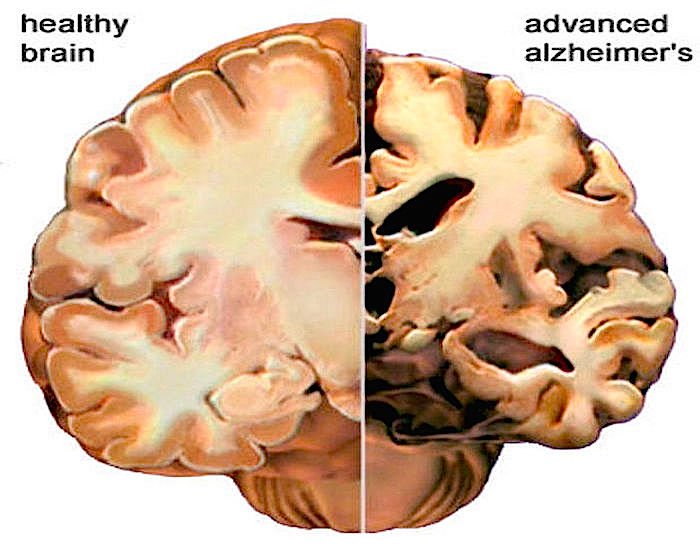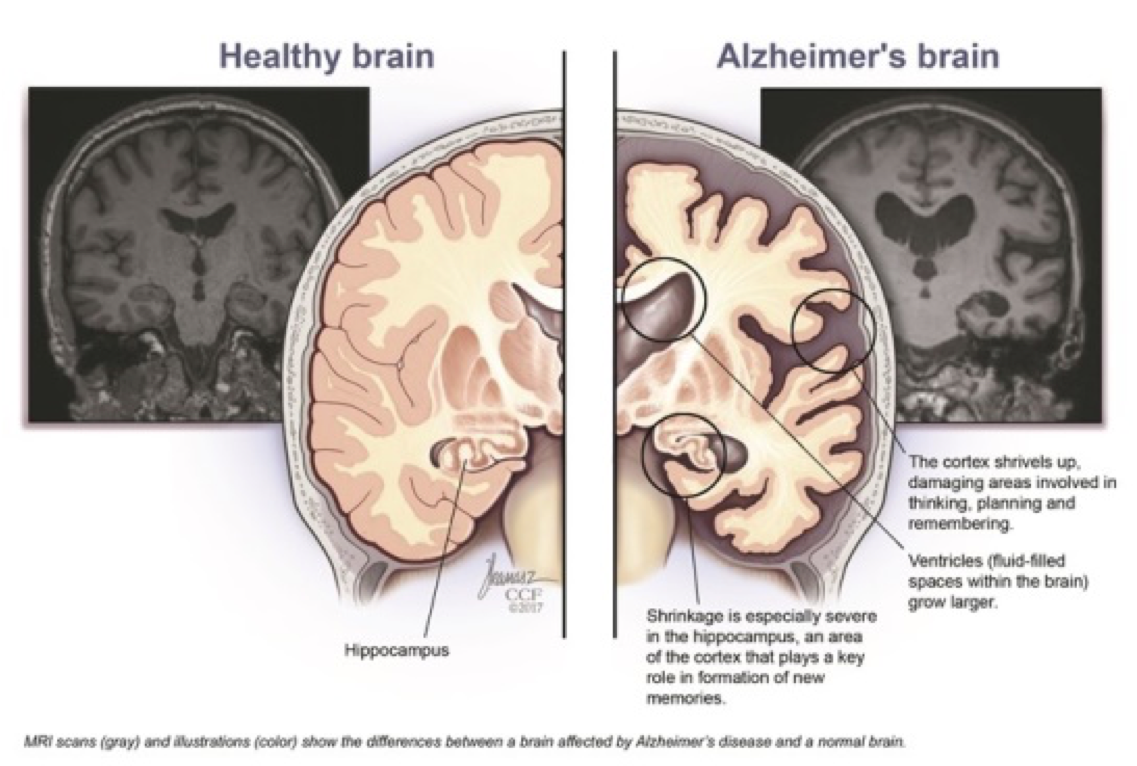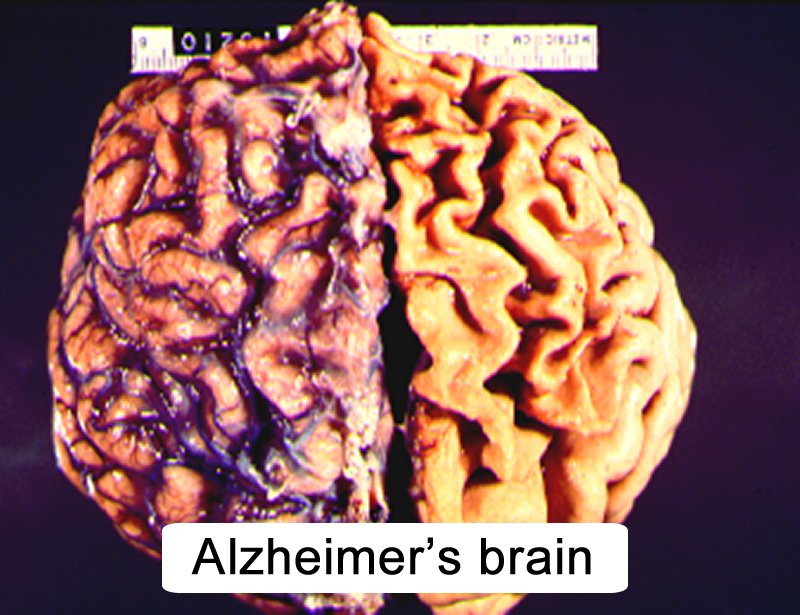What To Do If You Suspect Alzheimers Disease
Getting checked by your healthcare provider can help determine if the symptoms you are experiencing are related to Alzheimers disease, or a more treatable conditions such as a vitamin deficiency or a side effect from medication. Early and accurate diagnosis also provides opportunities for you and your family to consider financial planning, develop advance directives, enroll in clinical trials, and anticipate care needs.
Health Environmental And Lifestyle Factors
Research suggests that a host of factors beyond genetics may play a role in the development and course of Alzheimers. There is a great deal of interest, for example, in the relationship between cognitive decline and vascular conditions such as heart disease, stroke, and high blood pressure, as well as conditions such as diabetes and obesity. Ongoing research will help us understand whether and how reducing risk factors for these conditions may also reduce the risk of Alzheimers.
A nutritious diet, physical activity, social engagement, and mentally stimulating pursuits have all been associated with helping people stay healthy as they age. These factors might also help reduce the risk of cognitive decline and Alzheimers. Researchers are testing some of these possibilities in clinical trials.
Stages Of Alzheimers Disease
These stages include:
1. Early Stage Alzheimers
The earliest stages of Alzheimers may begin 20 years or more before diagnosis. At this point, plaques and tangles begin to form in parts of the brain that impact learning, memory, planning and thinking. Medical tests cannot yet detect Alzheimers in its earliest stages.
2. Mild to Moderate Alzheimers
As Alzheimers progresses to moderate stages, more plaques and tangles develop in areas of the brain important to memory, planning and thinking, and spread to areas that affect speech. These changes cause noticeable confusion and communication problems that can impact an individuals personal or work life. Often, Alzheimers is diagnosed in this stage.
Mild to moderate Alzheimers stages can last from two to 10 years. During this time period, individuals may struggle to recognize family members and friends. They may also experience behavior and personality changes.
3. Late Stage Alzheimers
The most severe stage of Alzheimers can last from one to five years. Most of the brains outer layer, which scientists have mapped to memory, movement, thinking and other functions, has been permanently damaged.
Widespread cell death causes the brain to shrink. At this point, individuals no longer recognize family and friends. They also lose their ability to care for themselves and communicate.
Recommended Reading: Difference Between Senility And Dementia
The Basics Of Alzheimers Disease
Scientists are conducting studies to learn more about plaques, tangles, and other biological features of Alzheimers disease. Advances in brain imaging techniques allow researchers to see the development and spread of abnormal amyloid and tau proteins in the living brain, as well as changes in brain structure and function. Scientists are also exploring the very earliest steps in the disease process by studying changes in the brain and body fluids that can be detected years before Alzheimers symptoms appear. Findings from these studies will help in understanding the causes of Alzheimers and make diagnosis easier.
One of the great mysteries of Alzheimers disease is why it largely affects older adults. Research on normal brain aging is exploring this question. For example, scientists are learning how age-related changes in the brain may harm neurons and affect other types of brain cells to contribute to Alzheimers damage. These age-related changes include atrophy of certain parts of the brain, inflammation, blood vessel damage, production of unstable molecules called free radicals, and mitochondrial dysfunction .
What Does Alzheimers Disease Look Like

Memory problems are typically one of the first signs of Alzheimers, though initial symptoms may vary from person to person. A decline in other aspects of thinking, such as finding the right words, vision/spatial issues, and impaired reasoning or judgment, may also signal the very early stages of Alzheimers disease. Mild cognitive impairment is a condition that can be an early sign of Alzheimers, but not everyone with MCI will develop the disease.
People with Alzheimers have trouble doing everyday things like driving a car, cooking a meal, or paying bills. They may ask the same questions over and over, get lost easily, lose things or put them in odd places, and find even simple things confusing. As the disease progresses, some people become worried, angry, or violent.
Also Check: What Causes Senile Dementia
Early Warning Signs And Diagnosis
Alzheimers Disease can be caught in the early stageswhen the best treatments are availableby watching for telltale warning signs. If you recognize the warning signs in yourself or a loved one, make an appointment to see your physician right away. Brain imaging technology can diagnose Alzheimers early, improving the opportunities for symptom management.
How Does Alzheimer’s Disease Affect The Brain
Scientists continue to unravel the complex brain changes involved in Alzheimers disease. Changes in the brain may begin a decade or more before symptoms appear. During this very early stage of Alzheimers, toxic changes are taking place in the brain, including abnormal buildups of proteins that form amyloid plaques and tau tangles. Previously healthy neurons stop functioning, lose connections with other neurons, and die. Many other complex brain changes are thought to play a role in Alzheimers as well.
The damage initially appears to take place in the hippocampus and the entorhinal cortex, which are parts of the brain that are essential in forming memories. As more neurons die, additional parts of the brain are affected and begin to shrink. By the final stage of Alzheimers, damage is widespread and brain tissue has shrunk significantly.
Also Check: Neurotransmitters Involved In Alzheimer’s Disease
What Nerves Are Affected By Alzheimer Disease
Initially, the loss of nerves in Alzheimers disease leads to short-term memory loss, which is processed in the hippocampus and entorhinal cortex . As the disease progresses, the nerves in the frontal lobe that play a role in judgment, behavior, and intelligence are affected. When the individual has language problems, the parietal lobe is affected.
Eventually, nerves in every region of the brain are affected. Unfortunately, today we have no imaging technique that can detect very early nerve loss in Alzheimers patients. It is only when at least 10-20% of neurons are lost that the imaging techniques can identify this nerve loss. Once nerve loss occurs in Alzheimers disease, it is irreversible.
How Does Alzheimer’s Disease Progress
The rate of progression of the disease varies from person to person.
However, the disease does lead eventually to complete dependence and finally death, usually from another illness such as pneumonia. A person may live from three to twenty years with Alzheimer’s disease, with the average being seven to ten years.
You May Like: Alzheimer’s Awareness Color
When Someone You Love Has Alzheimer Disease
You might feel sad or angry or both if someone you love has Alzheimer disease. You might feel nervous around the person, especially if he or she is having trouble remembering important things or can no longer take care of himself or herself.
You might not want to go visit the person, even though your mom or dad wants you to. You are definitely not alone in these feelings. Try talking with a parent or another trusted adult. Just saying what’s on your mind might help you feel better. You also may learn that the adults in your life are having struggles of their own with the situation.
If you visit a loved one who has Alzheimer disease, try to be patient. He or she may have good days and bad days. It can be sad if you can’t have fun in the same ways together. Maybe you and your grandmother liked to go to concerts. If that’s no longer possible, maybe bring her some wonderful music and listen together. It’s a way to show her that you care and showing that love is important, even if her memory is failing.
How Many Americans Have Alzheimers Disease
Estimates vary, but experts suggest that more than 6 million Americans age 65 and older may have Alzheimers. Many more under age 65 also have the disease. Unless Alzheimer’s can be effectively treated or prevented, the number of people with it will increase significantly if current population trends continue. This is because increasing age is the most important known risk factor for Alzheimers disease.
Read Also: Dementia Ribbon Tattoo
Managing Alzheimer’s Disease Behavior
Common behavioral symptoms of Alzheimers include sleeplessness, wandering, agitation, anxiety, and aggression. Scientists are learning why these symptoms occur and are studying new treatments drug and nondrug to manage them. Research has shown that treating behavioral symptoms can make people with Alzheimers more comfortable and makes things easier for caregivers.
How Is Alzheimer’s Different From Other Forms Of Dementia

Alzheimer’s disease is distinguished from other forms of dementia by characteristic changes in the brain that are visible only upon microscopic examination during autopsy. Brains affected by Alzheimer’s disease often show presence of the following:
-
Fiber tangles within nerve cells
-
Clusters of degenerating nerve endings
Another characteristic of Alzheimer’s disease is the reduced production of certain brain chemicals necessary for communication between nerve cells, especially acetylcholine, as well as norepinephrine, serotonin, and somatostatin.
Also Check: Bob Knight Dementia
Dementia And The Brain
Knowing more about the brain and how it can change can help to understand the symptoms of dementia. It can help a person with dementia to live well, or to support a person with dementia to live well.
These pages explain which areas of the brain are responsible for certain skills and abilities, and how these are affected by dementia. We explain how changes to the brain relate to changes a person may notice as the condition progresses.
This information is helpful for anyone who wants to find out more about how the brain is affected by dementia.
What Typical Changes Occur In The Brain Of Alzheimers Patients
Autopsy studies reveal that several biochemical and cellular alterations take place in the brain of Alzheimers patients. The majority of these changes can only be visualized during microscopy performed after death and they include the following:
Also Check: Bob Knight Health Condition
How The Body Shuts Down
As your body declines it raises the risk for other health problems.
- Infections may develop as your immune system begins to fail.
- Pneumonia can set in, especially if you inhale food or drinks by accident.
- Injuries from falls are more likely to happen.
Most people with Alzheimer’s disease die from pneumonia, another infection, or a heart attack.
It’s best to have conversations early on about how you’d like to be cared for. These conversations can be hard, but having a plan can make it easier for you and your family.
Show Sources
Vascular Contributions To Alzheimers Disease
People with dementia seldom have only Alzheimers-related changes in their brains. Any number of vascular issuesproblems that affect blood vessels, such as beta-amyloid deposits in brain arteries, atherosclerosis , and mini-strokesmay also be at play.
Vascular problems may lead to reduced blood flow and oxygen to the brain, as well as a breakdown of the blood-brain barrier, which usually protects the brain from harmful agents while allowing in glucose and other necessary factors. In a person with Alzheimers, a faulty blood-brain barrier prevents glucose from reaching the brain and prevents the clearing away of toxic beta-amyloid and tau proteins. This results in inflammation, which adds to vascular problems in the brain. Because it appears that Alzheimers is both a cause and consequence of vascular problems in the brain, researchers are seeking interventions to disrupt this complicated and destructive cycle.
Recommended Reading: Neurotransmitter Alzheimers
Later In Alzheimer Disease
As Alzheimer disease progresses, people have trouble remembering events in the past. They start to forget the names of friends and relatives. They may require help with eating, dressing, bathing, and going to the toilet. All sense of time and place is lost: People with Alzheimer disease may even get lost on their way to the bathroom at home. Their increasing confusion puts them at risk of wandering and falling.
Disruptive or inappropriate behavior, such as wandering, agitation, irritability, hostility, and physical aggression, is common.
Information from the above sources can usually help doctors rule out delirium as the cause of symptoms dysfunctionâthe inability to acquire, retain, and use knowledge normally. Although delirium and dementia may occur together… read more ). Doing so is essential because delirium, unlike dementia, can often be reversed if promptly treated. Differences between the two include the following:
-
Dementia affects mainly memory, and delirium affects mainly attention.
-
Dementia typically begins gradually and has no definite beginning point. Delirium begins suddenly and often has a definite beginning point.
What Happens To My Brain When I Have Alzheimer’s
02 February, 2017
Sad as it is to say, we are all used to hearing about different kinds of dementia, but we often do not receive clear explanations of what is happening to a brain suffering from it. For that reason, the goal of this article is to explain,in the simplest way possible, what is happening to a brain that has been diagnosed with Alzheimers disease.
Moreover, I will include one of the most recent and most hoped for advances in terms of treating . This advance, which was recently published by the journal Nature, is so important that its results may change the course of Alzheimers disease as we know it.
Don’t Miss: Margaret Thatcher Dementia
Diagnosis Of Alzheimer Disease
-
Safety and supportive measures
-
Drugs that may improve mental function
Treatment of Alzheimer disease involves general measures to provide safety and support, as for all dementias. Also, certain drugs can help for a while. The person with Alzheimer disease, family members, other caregivers, and the health care practitioners involved should discuss and decide on the best strategy for that person.
Pain and any other disorders or health problems are treated. Such treatment may help maintain function in people with dementia.
Medications To Maintain Mental Function In Alzheimer’s Disease

Several medications are approved by the U.S. Food and Drug Administration to treat symptoms of Alzheimers. Donepezil, rivastigmine, and galantamine are used to treat the symptoms of mild to moderate Alzheimers. Donepezil, memantine, the rivastigmine patch, and a combination medication of memantine and donepezil are used to treat moderate to severe Alzheimers symptoms. All of these drugs work by regulating neurotransmitters, the chemicals that transmit messages between neurons. They may help reduce symptoms and help with certain behavioral problems. However, these drugs dont change the underlying disease process. They are effective for some but not all people and may help only for a limited time.
Read Also: Alzheimer’s Neurotransmitters Affected
Creating A Beneficial Environment For People With Dementia
|
People with dementia can benefit from an environment that is the following:
|
Main Characteristics Of A Brain With Alzheimers
Advances in brain imaging techniques have allowed researchers to look at and closely observe the brain of a patient with Alzheimers. And through these methods, youll clearly see an undeniable damage in an Alzheimers brain.
And although experts are still uncertain about what really causes Alzheimers, it is believed that the majority of damage in the brain is due to the accumulation of two proteins called beta-amyloid and tau.
Heres how these two proteins may contribute to the spread of Alzheimers disease:
Also Check: Quality Of Life Alzheimer’s Disease
Who Has Alzheimers Disease
- In 2020, as many as 5.8 million Americans were living with Alzheimers disease.1
- Younger people may get Alzheimers disease, but it is less common.
- The number of people living with the disease doubles every 5 years beyond age 65.
- This number is projected to nearly triple to 14 million people by 2060.1
- Symptoms of the disease can first appear after age 60, and the risk increases with age.